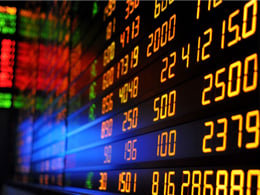 The headline this morning, of course, is yesterday’s stock market decline—a loss of almost 2 percent for the S&P 500 on the heels of a weak December. There’s been a great deal of commentary pointing out that the market dropped both the last day of December and the first day of January, which means . . . what?
The headline this morning, of course, is yesterday’s stock market decline—a loss of almost 2 percent for the S&P 500 on the heels of a weak December. There’s been a great deal of commentary pointing out that the market dropped both the last day of December and the first day of January, which means . . . what?
Not much, I would argue. We’re certainly hitting a weak patch in the market, but several days of weakness aren’t necessarily reason to worry.
Remember the bad stretch in October of last year, when markets dropped precipitously and then bounced right back up? I was on TV with Maria Bartiromo at the time, and the sentiment was seriously downbeat. Or, consider the downdraft in mid-December, which just as quickly reversed.
After both of these drops, and at least three others during 2014, we ended up having a great year. Downdrafts are part and parcel of the market, and it’s a mistake to overreact.
When will I start to worry?
Well, I will start paying attention when and if the S&P 500 drops below its 200-day moving average, to around 1,960, about another 3-percent drop from where it is right now. History shows that’s where we should start being concerned. Dropping below that level doesn’t mean imminent problems—as we saw in October of last year, when we broke below it and then bounced back—but it’s a good point at which to take stock of your positions and risk level.
We’re not yet close to my personal worry point, from a market perspective. I'm also reassured by the strong fundamentals of the U.S. economy, as well as the fact that the two biggest risks out there actually stand to benefit the U.S. in many ways.
Major risks (that also have their benefits)
Dropping oil prices. Low oil prices have been very bad for the energy companies; much of yesterday’s market decline came from energy rather than other sectors. Over time, however, lower prices should benefit other companies by reducing their costs and increasing their sales (thanks to consumers with more money in their pockets).
We need to distinguish between short-term damage to the market indices, driven by a hit to one sector, and damage to the underlying fundamentals of the market. Whether the benefits to other companies will exceed the costs to the energy companies is uncertain and will take some time to play out, but I suspect they will.
The slow-motion political train wreck in Greece. Although only a potential risk at this point, it could well bring the European crisis back to the front pages. That said, the financial and political structures of the eurozone, not to mention its economy, are much better positioned to weather any troubles. After all, last time it was a surprise, and this time it would be anything but. In fact, the level of uncertainty in Europe appears to be helping hold down U.S. interest rates, which is good for the U.S., as European investors choose to buy U.S. assets, including bonds.
Not time to panic
Overall, while I recognize the risks we face (and there are big ones) and guarantee that at some point we'll see a market decline worth worrying about (and it could be a big one), the signs don’t suggest that now is the time to panic.
Remain calm, and carry on.


 Print
Print


